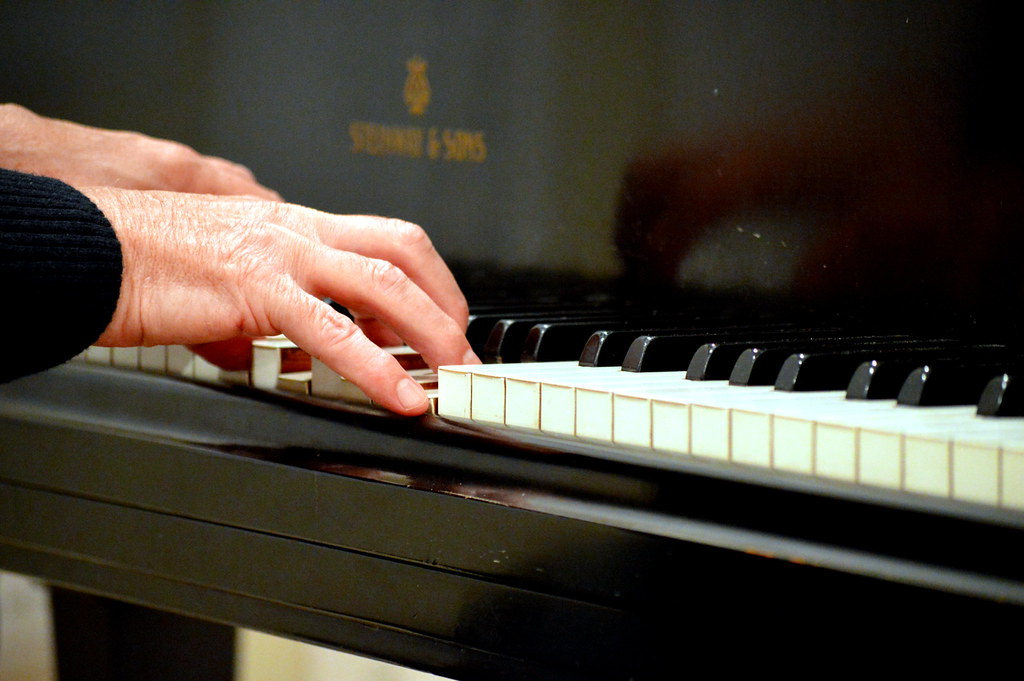See also: Articles on Music, Hearing Loss, and Hearing Devices 
Webpages for Music Therapists:
How to Use This Website
1, 2
Q. What is the purpose of this website?
A. The Music and Hearing Loss website provides information about various aspects of music and hearing loss. It is part of the Iowa Head and Neck Protocols, free access, curated website developed by the Department of Otolaryngology-Head and Neck Surgery at the University of Iowa Hospitals and Clinics. A detailed description of the Music and Hearing Loss pages is found at this link. Most web pages have been designed for (1) audiologists and otolaryngologists, (2) people who use cochlear implants or hearing aids, or (3) musicians who wish to prevent music-induced hearing loss. These pages may also be useful to music therapists who work with people who have hearing loss.
Many music therapists work with clients who have hearing loss, especially those who serve older adults. Unfortunately, hearing loss can undermine music enjoyment in daily life or satisfactory participation in music therapy. Thus, the information on this website about optimizing music experiences for people with hearing loss is a useful clinical resource for music therapists who work with clients with hearing loss. Also, music therapists can gain information on how they, as musicians, might effectively prevent music-induced hearing loss.
Q. What parts of this website might be useful to music therapists or their clients?
A. Music Therapists can use the following links to help their clients (1) to better understand the impact of hearing loss on music participation and listening, and (2) to improve the quality of musical sound during music listening and participation.
-
Music and Coping with Hearing Loss
-
Information for people with hearing loss and their families
-
-
Cochlear Implant (CI) and Music
-
Information for CI users and their families
-
-
Hearing Aid (HA) and Music
-
Information for HA users and their families
-
-
Resources on Music, Hearing Loss, and Hearing Devices
B. Music Therapists can use the following links for advice on how to protect their own hearing from music-induced hearing loss.
-
Music-induced Hearing Loss
-
Music making and hearing loss
-
-
Music and Hearing Preservation
C. Music Therapists who work with older adults can use these links for clinical suggestions for optimizing spoken and musical communication during music therapy.
-
Essential knowledge and consideration for music therapy practice
-
Strategies and accommodations to enhance musical and verbal communication
References
Wilhelm, L. A. (2016). Accessibility of music experiences for individuals with age-related hearing loss. [Doctoral dissertation, University of Iowa]. Iowa Research Online.
Wilhelm, L. A. (2020). Using contextual and visual cues to improve sung word recognition in hearing aid users. Journal of Music Therapy, 57(4), 379-405.
Gfeller, K. E., Darrow, A., & Wilhelm, L. A. (2018). Music therapy for persons with sensory loss. In Knight, A. J., LaGasse, A. B., & Clair, A. A. (Eds.), Music therapy: An introduction to the profession (pp. 217-233). American Music Therapy Association.
Click here to review references used in preparation of this website.
1. All images on this website are used under Creative Commons or other licenses or have been created by the website developers.
2. Click here to access the sources of images on this page.


